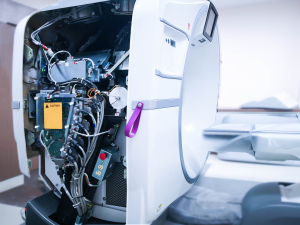From the August 2019 issue of HealthCare Business News magazine
By James Laskaris
Healthcare costs the U.S. over $3.65 trillion each year, a figure that is growing at an annual rate of 5 percent. The hospital market alone will reach an estimated $800 billion in the next couple of years. High-tech capital equipment has an important impact on costs, patient safety, and outcomes. Each year, providers will spend $31 billion on high-tech lab, patient monitoring, imaging, radiation therapy, and robotic technology. Healthcare IT and telemedicine technology adds another $35 billion to the spend. Combined with lower-end healthcare technologies, a hospital should expect to spend at least 2 to 3 percent of its budget on new technology every year. It’s a trend that will continue to grow as the population ages and consumers and physicians demand more leading-edge technology.




Ad Statistics
Times Displayed: 31443
Times Visited: 833 Stay up to date with the latest training to fix, troubleshoot, and maintain your critical care devices. GE HealthCare offers multiple training formats to empower teams and expand knowledge, saving you time and money
In any industry, service is an important issue when technology is involved. Along with the initial expense of acquiring technology, service can be a significant factor in cost of ownership. Each year the U.S. healthcare industry will spend over $14 billion dollars for service on medical technology. This accounts for 3-8 percent of what the original technology costs per year (IT accounts for up to 20 percent per year). Although small compared to a facility’s overall labor costs (50 percent) or even what hospitals spend on consumables (15¬–20 percent), service on medical technology could mean at least a $1–$2 million or more (0.5 percent of the overall budget) line item for a 200-bed hospital. Larger teaching facilities would see this number easily reach $3-$5 million. Hospital profit margins in the last 10 years hover in the 4-6 percent range at best, but as many as a quarter of hospitals function in the red. Because of this, service has been a focus for lowering costs.
Service can also be an important revenue stream for vendors, accounting for up to 40 percent of a vendor’s total revenue. This is especially true of high-end technology providers (robotics, imaging, lab, IT) or systems with a long life cycle (sterilizers, beds, lights). Profit margins for vendors on their service plans can also reach 50 percent. This has become especially evident for new IT-focused technologies where software licensing and upgrades have become the norm.
The good news is that there are multiple service options available to control costs. The key is to balance lower costs without compromising outcomes. These include multiple-vendor, hospitalwide, third-party, and in-house service options. Each has its own pluses and minuses when balancing risks with savings.

